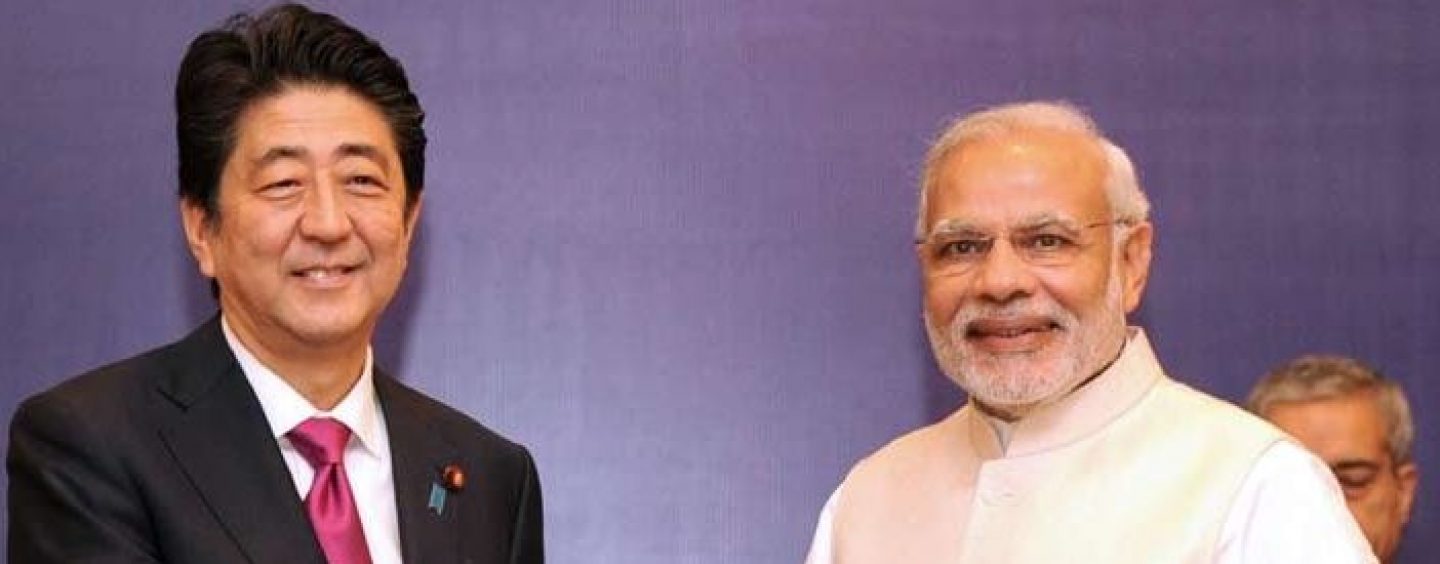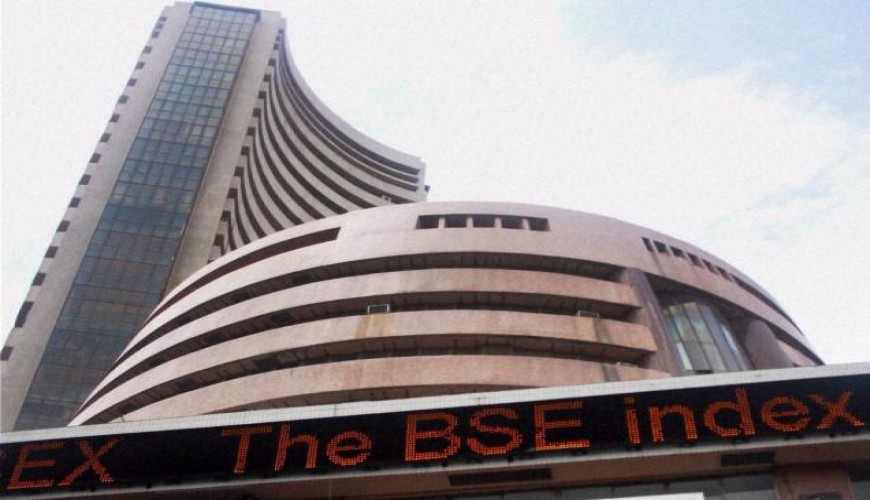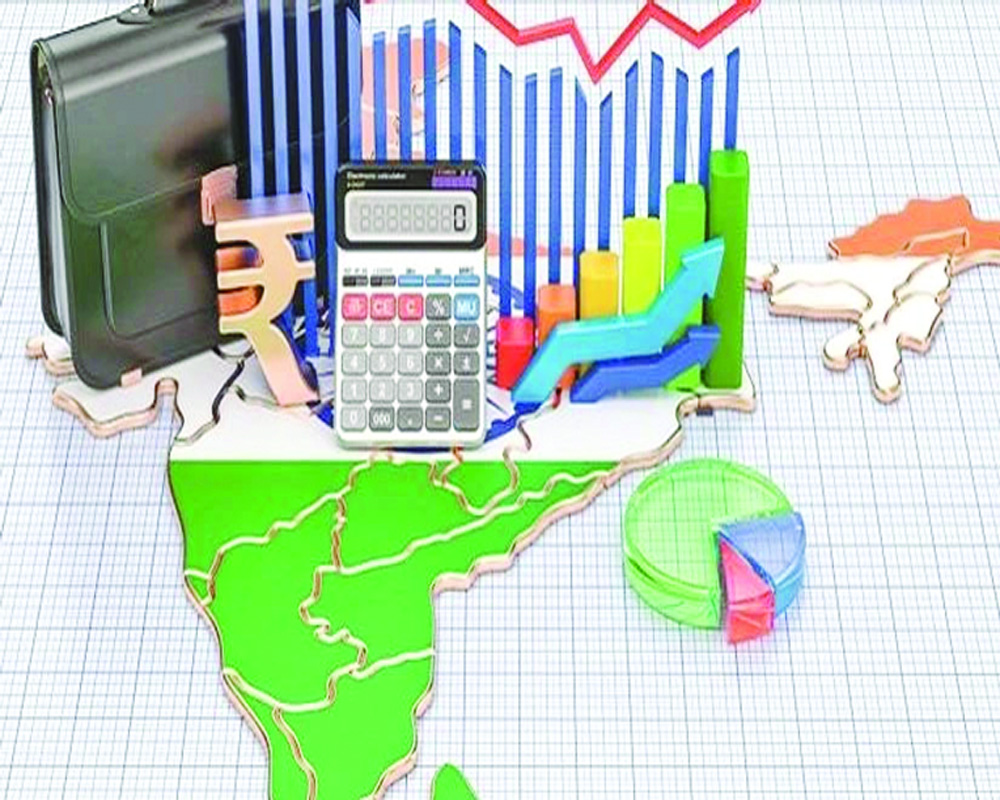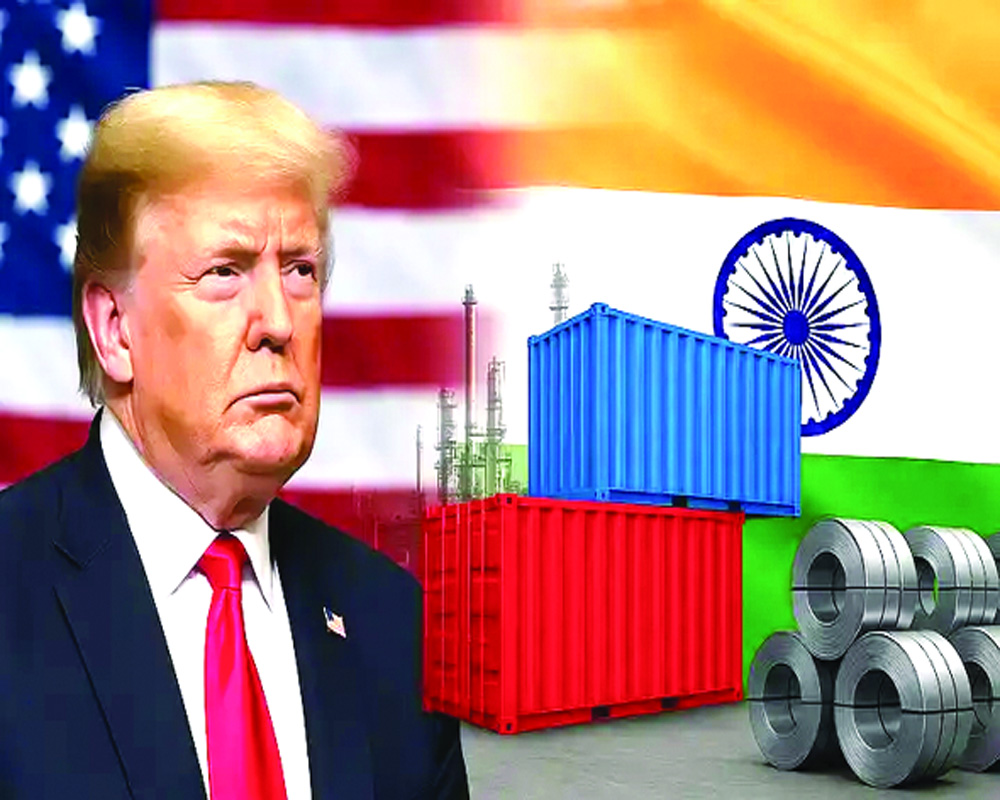The most unique contribution Japan can make to India’s development is in the field of large scale,high-tech and long term infrastructure development, including financing thereof. In addition, India can expect four qualities from Japan: safety, environmental friendliness, ergonomics and strategic trust, leading to a low life- cycle cost. A combination of such qualities is very much desirable but also creates a complexity in the assessment and the decision making process. Let us study these aspects and how the Prime Minister of India Narendra Modi’s policies can help in the matter.
The Nature of Potential Japanese Collaboration with India Japan is well known for bullet trains, which is demonstrably the world’s best as a combination of length, speed, frequency, service and most of all safety — not a single accident fatality despite many severe earthquakes in the total history of more than 50 years. The remote rural part of Japan is also well covered by the public transport despite a very mountainous terrain of the country through breath- taking bridges and tunnels.
Japan’s urban transport systems are also a wonder, with greater Tokyo having the world’s most extensive and smooth urban rail network of 158 lines with 2,200 stations serving 40 million passenger rides daily, a little more than the total population of the region, which is also world’s largest urban conglomerate, at about 35 million. This is further connected with a dense and frequent bus operation as well as increasingly pedestrian and bicycle friendly urban planning.
This is topped with a long time impeccable record for safety and on-going regular improvements on all aspects. Crucially, since the global financial crisis like Lehman shock, Japan stands out with the biggest financing appetite in terms of the amount and the time period. Japan is already the biggest financier for Asian Development Bank which in turn has India as the biggest recipient, and Japan International Cooperation Agency (JICA) being a leading ODA provider in the world with India the largest recipient for years. Japan Bank of International Cooperation (JBIC) provides up to 40 years of loans and has a big interest in India.
On the other hand this is exactly the need of the time for India — Infrastructure and the long term financing for it. Growth of Demand in India We have seen a strong demand for good quality infrastructure in India over the last decade which supports the commercial viability. Until the early 1990s masses in India would prefer free roads, which was purely a responsibility of the government. Due to various political and government inefficiencies the quality of the public infrastructure development was very pure while the government was also under huge fiscal pressure for lack of tax revenues. The lack of infrastructure also resulted in lack of manufacturing industry which crucially depends on infrastructure and hence India continued to be too dependent on imports both for energy as well as manufactured goods. The fiscal and trade imbalances grew to a state of crisis and forced India to take major steps in economic reforms in the early 1990s.
With the economic liberalization new momentum in the Indian economy kicked in. India saw major foreign direct investments coming in and also the timing coincided with the y2K problem in the global IT industry which demanded huge software manpower. This was an area India could excel given the knowledge of English and relative independence of physical infrastructure like roads and power. The IT industry created a new confidence and global exposure in India.
As Indian people travelled more frequently to developed countries for various IT related jobs they brought back a new expectation of quality. The global exposure through Tv and other means also created new standards of quality and there was a new demand for high quality infrastructure even if it meant paying for the use, like toll roads. In the wake of the economic liberalization India quickly adopted privatization of infrastructure and saw more and more private sector partners coming into infrastructure development and operations through PPP models. This new demand and PPP paradigm provides a platform for Japanese collaboration in India.
Difficulties in Infrastructure Development
Despite the demand, unfortunately various political reasons and regulatory complexity across different ministries and approval authorities has hindered a proper planning and decision making on large scale projects and that’s where a big hope is on the new Modi government. Modi government being a powerful single party government, with the credit and expectations of the Gujarat Model, is in a good position to expedite the decision making on large and complex infrastructure projects, which creates the right opportunity for Japanese engagement.
It’s after 30 years that India has a single party majority in the central government. Over these 3 decades India had coalition governments of various compositions including community parties, regional parties and religion based parties with varying agendas. This led to a big difficulty in reaching agreements with long drawn debates on various aspects of social, environmental, religious, political and economic issues. The nature of the coalition governments also created a model of pacification and appeasement which further complicated the decision making process.
The election leading to PM Modi’s government is also very different from the last single party majority government formed in 1984. In 1984, the assassination of then Prime Minister Indira Gandhi led to a sympathy wave putting her son Rajiv Gandhi, with little political experience hitherto, as a prime minister heading a single party majority government.
Differing agendas and styles of various political parties made even the most obvious of the decision making processes too complex. In the severe political competition, often one party would block the decision only to stop the other party to get credit for a good project. In lack of good public media and education there was also a lack of sufficient debate and analysis in the public for a good judgement which further encouraged the political parties to have their own petty agendas play the game.
New Political Process leading to the election of Prime Minister Modi
The elections in 2014 witnessed a very different approach led by intense debates and information propagation through online media like Facebook, Twitter, WhatsApp and others. As I mentioned earlier India continued to lack physical infrastructure due to inefficiency in the decision making, development and financing processes, but India could excel in the IT industry due to the advantage of English and independence of large scale physical infrastructure for IT industry.

One more relevant factor is the theoretical and debate loving mindset of Indian people. The Indian constitution also allows a great degree of freedom of speech and expression which led to IT driven online media in India. While India is still much behind in terms of printed media, India has leapfrogged in online media.
Social Network Systems have further contributed significantly in the online information propagation and analysis. The online media also has a natural virtue of being better connected with the educated and techno-savvy people of India who are better able to judge the political agenda and are more respected opinion leaders in their respective communities.
political agenda and are more respected opinion leaders in their respective communities.As earlier mentioned the global exposure and economic liberalization has also put the economy and good governance on a higher agenda rather than the religious and regional political agenda which had mostly dominated the elections in the past.
Modi’s humble background of poverty in childhood and being an active member of a nationwide grassroots Hindu organization called Rashtriya Swayamsevak Sangh (RSS) has also contributed to his great popularity in the masses. Prime Minister Modi’s Previous Track Record from the State of Gujarat India is well known to be a very diverse country. The diversity is not just evident in natural and cultural terms but also in the economic situations in different parts of India. Different states of India have very different levels of economic development and infrastructure as well.
Narendra Modi headed the state of Gujarat as the Chief Minister between 2001 and 2014. The progress of the state during the period was a major factor in the election process as well. Gujarat is one of the best states in various parameters. Gujarat is among the very few states of India with sufficiency of electricity which grew the electricity production by 2.5 times during Modi’s tenure. Gujarat state also has better quality of roads compared to the average condition of roads in India. The length of roads also grew by 3.6 times during the tenure of Modi with development of new roads. The whole of country is expecting a similar state of growth in the rest of the country as well under the leadership of Modi.

Prime Minister Modi’s Style of Governance
Narendra Modi’s style of governance in the state of Gujarat speaks volumes. While corruption is a big problem in various aspects of India, Modi himself is known to be a very clean and selfless. He is also a very hard working person with even very few hours of sleep a day. He also demands the same from his administration.
He is also known to be a very hands- on person with an excellent memory. He would remember the person in charge for a particular project and the performance parameters and deadlines and would often personally follow up on the matter by picking up a phone directly.
In the process, he built a close knit network of bureaucrats around him in the state of Gujarat whom he has also taken along with him to the central government into the Prime Minister’s Office. A large part of critical decision making is done from the Prime Minister’s Office directly under the PM’s supervision. This is quite unlike the previous Prime Ministers where the decision making was decentralized to various other senior politicians as well as other members of the ruling party.
Modi has further kept the decision making closer to him as most of the senior ministers are younger than Modi himself at the age of 66. It’s also observed that most of the Ministers around PM Modi are strong followers of PM Modi, which along with a very Prime Minister’s Office led decision making process is drawing analogies to the White House style model of the United States of America.
Role for Japan in the New Plans by Prime Minister Modi
For the plan for 100 new smart cities announced by the Modi Government, Japan has the world’s best technology and implementation examples, like the Yokohama Smart City. Japan has some of world’s best transport systems technology and expertise for ports, airports, highways and railways, as also noted above.
While we face many accidents in Indian transport systems, safety is another attractive and complimentary aspect of Japan. With zero fatalities in 50 years of operations of running 5 minutes behind each other, Japanese bullet trains are equipped with a technology to detect an earthquake about a minute in advance and special technology for emergency stop from a high speed of 300 kilometers per hour within the minute.
Strong safety features are commonly seen in all aspects of Japanese infrastructure systems where even a single death by accident is infrequent enough to become national Tv news.Natural disasters like earthquakes and typhoons being quite common in Japan, such a strong preparedness is seen in Japan for the same that life and work continue almost as normal despite a significant earthquake.
As a personal experience, when the world media thought Japan was devastated by the earthquake and Tsunami on 11th March 2011, my Japanese col- leagues continued to work to meet a promised delivery for a client in the same afternoon. My worried brother from India researched and informed me that my office building is the strongest in the world for earthquakes and that it’s safer for me to stay in here for the time being. Such earthquake resilient construction technology is much desirable for India where we also face occasional significant earthquakes.
Nuclear power has been seen as an important source of energy and India and Japan have finally reached a civil nuclear technology collaboration agreement after years of discussions due to India not being part of NPT and Japanese sensitivities to nuclear matter being to only country suffering from a nuclear bomb. Japan faced a serious and unexpected natural disaster of 15 meters high Tsunami hitting its Fukushima

Nuclear Power plant on March 11th 2011, leading to a serious accident. This adds to Japanese experience and lessons learnt from a disaster which makes the Japanese nuclear collaboration even more desirable for India and is high on PM Modi’s priority list for collaboration with Japan.
After safety, the second quality of environmental friendliness is demonstrated in the least carbon footprint per unit of GDP in Japan among the large countries of the world. As the world is already facing a serious challenge of climate change and India catches up on per capita energy consumption with the industrial world, it’s important for India and the world to adopt eco-friendly technology across the life-cycle of production, usage and disposal. Japan has the best of low carbon emission power production technology across different sources like thermal, hydro, solar, wind, geothermal and nuclear. Not many countries of the world have enough of such technology and capacity to finance it.
With more than $100 billion of asset under management, one of the prime mandates for Japan Bank of International Cooperation (JBIC) and Japan International Cooperation Agency (JICA) is environment. Already there are many JBIC and JICA fi nanced environment friendly projects in India, but there is still a tremendous untapped potential where PM Modi’s plans for smart cities and new energy projects are very important platforms.
Urban Infrastructure, a leading infrastructure development and operator group of India, I facilitated an MoU of GMR with JBIC of Japan bilateral collaboration in technology and capital and can witness the willingness and potential between both the countries. Ergonomics of Japanese systems needs to be experienced to be believed and the Japanese products exported overseas are a good sample for the same. Japanese systems are also very friendly for the physically disabled.
Last but a very important quality I mentioned is being strategically trusted. Japan respects India for the philosophy of Buddhism and Mahatma Gandhi and remembers Justice Radha Binod Pal, who gave the sole dissenting comment in the Tokyo War Crimes Tribunal, and Subhash Chandra Bose very fondly for their pre independence collaboration with Japan. During the Japan Visit PM Modi also met the surviving colleagues of the above in Tokyo.
While India helped Japan critically with early diplomatic recognition and natural resources after the war, JICA, world’s largest ODA agency was founded with India especially in mind and continues to work quietly for the humanitarian developmental needs of India. On the other hand, while with very little mind share compared to USA, UK, Singapore or other English speaking countries, Japanis more trusted and respected in India.
This trust mandates mutual collaboration in the areas such as ports, telecommunication and defense technology. Prime Minister Modi has announced 16 new ports where discussion with Japanese ports is already underway. An unprecedented sales and future domestic manufacturing in India of defense related Japanese amphibian planes US2 is also at an advanced stage.
And in India’s desperate plans to reduce the import bill by promoting domestic electronics manufacturing Japan can be an ideal, trusted and equally desperate partner. Japan is in a desperate need for a market for survival of Japanese high tech electronics industry, where India is a holistic and near green field opportunity for Japan to start cost effective manufacturing in newly planned Electronics Manufacturing Clusters and cater to an expected $400 billion Indian electronics market by 2020.
The high cost of Japanese technology is an often cited concern, but that can well be compensated by the very low cost long term financing by a cash rich and very willing Japan, along with reduced life cycle cost in the long run. This raises possibilities of dedicated Japan-India funds which can support Japanese technology with Japanese financing.
A combination of technology with the government financing raises some debates on the international competitive bidding processes and various guidelines of the multilateral organizations like World Trade Organization, IMF and Asia Development Bank etc. Also a longer and more rigorous life- cycle assessment process is required to fully appreciate the economic feasibility and attractiveness of the combination of Japanese technology and financing package.
India has seen too many example of use of cheap technology and inadequate planning processes leading to failure of various infrastructure projects. This includes various power plants, city developments and infrastructure development projects. The problem is often further exacerbated because of the corruption involved in the process. India as well as foreign investors from Japan are looking up to a strong leadership of PM Modi to enforce a strong due diligence and planning process, building a confidence to focus on long term aspects and higher quality, reduce the corruption and hence improve the overall decision making process.
Looking at the example of Japan’s development with a long term focus on quality, which leads to over economic efficiency, India Japan collaboration can be expected to grow rapidly through a confident decision making process expected from PM Modi.Two major free market democracies of the world with common traditional values and mutual trust have perfect economic complementarities where Japan can provide the technology and finance for the development of India and India can reciprocate with a growth market and global human resource for ageing Japan. ‘The most potent bilateral relationship of the world’, as Prime Minister Abe proclaimed during his visit to India, had been waiting for strong leaderships from both sides. With the two Prime Ministers Abe and Modi, expectations are now very high indeed.
Going forward
One of the most significant contributions from Japan to India can be in large scale infrastructure projects like high speed railways, smart cities, ports and industrial zones, requiring both reliable eco friendly technology and long term financing, where Japan is the world leader in combination. With the strong new government in India one can expect effective decision making on such large scale projects and hence a new paradigm of effective Japanese collaboration in India.
– Sanjeev Sinha (The writer is Indo Japan Business and Investment Advisor based in Japan)








 OpinionExpress.In
OpinionExpress.In















Comments (0)